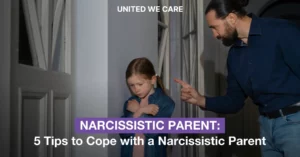Introduction
While being a parent is challenging, being a step-parent comes with its unique challenges. There is confusion about roles and often a need to develop bonds with children. This article explores how one can be a successful step-parent.
What does being a Step-Parent mean?
Being a step-parent means being a parent to one’s partner’s biological children from a previous relationship. Blended or step-families are rising, especially in Western countries [1]. It means the need to understand how a stepparent-child relationship flourishes or gets damaged is high.
Typically, fewer societal guidelines for an ideal step-parent. Becoming a step-parent involves joining a family with an established parent-child system. In such a scenario, joining with the child and gaining trust becomes essential to gain confidence.
What are the challenges of being a step-parent?
There are specific challenges that are unique to being a stepparent. Some researchers have shown that parenting stress is higher for step-parents than biological ones [2]. A few of the most common challenges associated with step-parenting are as follows:
- No clear roles: The roles of the step-parent, especially at the beginning, must be clarified. It is still being determined how much of a parental role they will take up, whether they will be friends, strangers, or authority, and whether or not they have power. In the absence of such clarity, both the child and the step-parent may feel divided and transparent [1].
- Media’s portrayal of stepparents: Often adding to the challenges is the expectation that stepparents will be evil or divide the family, often in children’s minds [1]. It comes from familiar stories in movies and other media; such expectations can make the relationship difficult.
- There is always some rejection: Irrespective of how nice or friendly the stepparent is. There will be some sacrifice [3]. They are dealing with the separation of a biological relative and may have several feelings that they cannot deal with.
- Stepparents and stepchildren often have different expectations of the former’s role. They want the stepparent to be less active, like a friend. On the contrary, parents want the stepparent to be more active. These differing perceptions are challenging to navigate in real life.
- Biological parents and stepparents have different parenting styles: Birth parents often have different child-rearing views, and stepparents disagree with these methods. In such situations, miscommunication, anger, and resentment build, and this often becomes the cause of the remarried couple separating [3].
These are just some of the challenges. Depending on the family context, the age of the children, and the gender of the children, there might be more challenges in a stepparent’s life. However, communication and mutual effort sometimes address issues.
Tips for Being a Successful step-parent
To be in a blended family with stepchildren can be a fulfilling experience, and one needs to be ready to consciously work towards building a positive relationship. Here are some tips which can help a person be a successful step-parent.

- Take it too slow and Communicate: Stepparents who practice patience and move with the idea that building relationships will take time are often more successful [1]. Family functioning improves when open communication is present and one is ready to negotiate boundaries and new roles. It can be helpful to discuss with the child that the new parent will not replace anyone and keep realistic expectations about how the child will react to the stepparent.
- Be Prepared for Rejection: Some rejection will happen in all types of blended families [1]. It is essential not to take the rejection personally. It is also helpful for the biological parent to expect some rejection and facilitate conversations between the stepparent and child in the initial phase. Further, if the refusal is disrespectful, it can be the task of the biological parent to set expectations of polite behavior within the family [3].
- Become a Friend, not a Disciplinarian: Researchers have found that when stepparents work on building friendships, their relations with children have more liking and affection [5]. Children are more likely to accept step-parents when they work towards building a bond based on trust instead of taking the role of authority straight away [3]. Expectations of obedience from stepchildren are perceived negatively by the child, and if such expectations are not changed, children become resistant to the stepparent [3].
- Praise liberally: Children perceive love differently; praise and compliments are parts of affection. One study found that when stepfathers praised the children, they were likelier to be rated affectionate than fathers who initiated hugs [3]. Especially in the case of stepfathers, praising and noticing the child can become a great bonding tool.
- Be a student to your stepchild: Consider becoming a student. Learning likes and dislikes, routines, and what they’re good at can help build the relationship [3]. Having the child do some activities with the stepparent and moving on to one-to-one activities can help gradually build a relationship.
- Treating equally biological and stepchild : In families where both biological and stepchildren are present, a balance is essential in treating both [2]. The absence of this causes poor functioning, and one must be careful in identifying one’s thought patterns and actions concerning both types of children.
- Strengthen your marriage: It is equally important to have a strong bond between the parents [2]. The absence of this bond causes friction in relationships with children and reduces the incentive to build any relationship with the child. Understanding each other’s parenting styles and negotiating differences of opinion is essential before involving the child [3].
Conclusion
A successful stepparent realizes that some rejection will exist. Being patient, learning from the child, building friendships, and ensuring you treat the stepchild well can help you build successful relationships.
Read this article to get more information of ptsd
Connect with a professional from United We Care to learn more about building bonds with stepchildren.
References
- A. V. Visser, “Constructing New Relationships: A Thematic Analysis of Stepmother and Stepchild Co-Construction of Close and Enduring Bonds.”
- T. M. Jensen, K. Shafer, and J. H. Larson, “(step)parenting attitudes and expectations: Implications for stepfamily functioning and clinical intervention,” Families in Society: The Journal of Contemporary Social Services, vol. 95, no. 3, pp. 213–220, 2014.
- “Bonding with stepchildren: Mission impossible? – stepfamily.” [Online]. Available here: [Accessed: 30-Apr-2023].
- M. A. Fine, M. Coleman, and L. H. Ganong, “Consistency in perceptions of the step-parent role among step-parents, parents and stepchildren,” Journal of Social and Personal Relationships, vol. 15, no. 6, pp. 810–828, 1998.
- L. GANONG, M. COLEMAN, M. FINE, and P. MARTIN, “Stepparents’ affinity-seeking and affinity-maintaining strategies with stepchildren,” Journal of Family Issues, vol. 20, no. 3, pp. 299–327, 1999.





